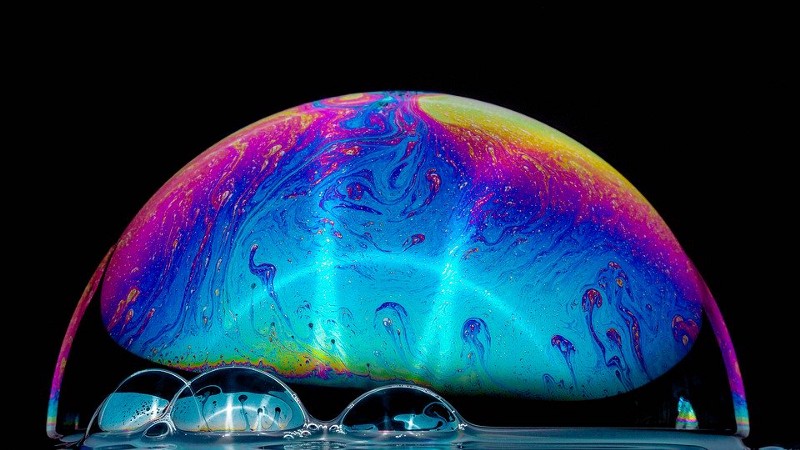Bubbles are the subject of fascination for young children and legendary physicists alike; though pretty to observe, they also offer intriguing lessons in fluid dynamics. Looking closely at the surface of a soap bubble, a shimmering, iridescent surface swirling with activity can be observed. These mesmerizing patterns are due to the Marangoni effect.
This phenomenon comes into play when there is a gradient of surface tension along the interface between two phases of matter — in this case, the boundary between the liquid bubble and the gas filling it. This gradient means that the surface tension is greater at some parts of the surface than at others. As a result, molecules called surfactants, which reduce local surface tension, are tugged towards regions of higher surface tension. This in turn changes the surface tension gradient. The colors on the bubble come from these changes in the thickness of the film, so this surface flow creates the dizzying rainbows that make bubbles so amazing.
But is it possible to halt those swirling Marangoni flows in their tracks? Pursuing this question originally asked by a high school intern, a team of researchers at Stanford created a tiny air bubble only one millimeter wide just beneath the surface of a bath of surfactants. The bubble was pushed upwards one tiny step at a time so that it poked above the surface of the bath. Each upward push introduced a new surface tension gradient to the exposed bubble, triggering new Marangoni flows along the outer rim of the bubble. Each new wave of Marangoni flows trapped the previous one, eventually creating a stable surface composed of layers of an inherently chaotic yet beautiful phenomenon. (The researchers have made a video of this experiment available.)
“You almost expect that things that are mundane — day-to-day objects, simple things — are all figured out. You take it for granted,” said lead author Dr. Saad Bhamla in an interview with Stanford News. But this experiment proves otherwise: something as simple and whimsical as bubbles can blow open fascinating avenues of scientific inquiry.
DOI: 10.1103/PhysRevFluids.1.050506
